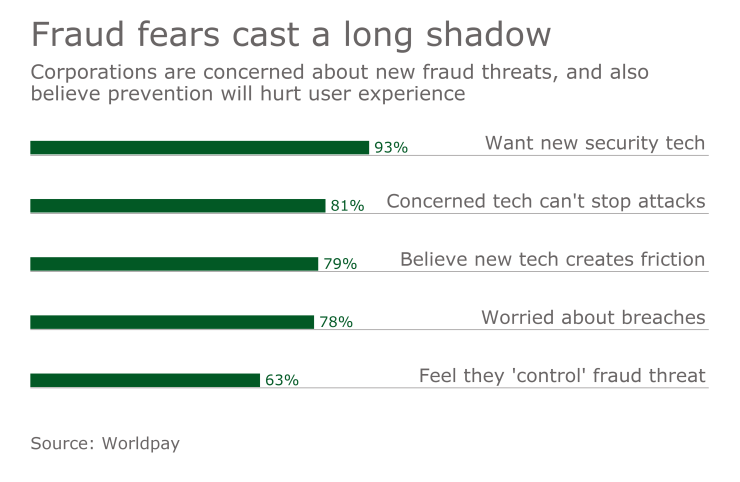Want unlimited access to top ideas and insights?
The global e-commerce market continues to expand. By 2019, it’s expected to be worth $2.4 trillion. But as the market grows, so does the opportunity for fraud (online fraud was up by 30% last year), and the sinister ways by which fraudsters commit their acts.
While we can’t put all the blame on the EMV switch, we can attribute a big part of this growth in fraud to it. That rollout made fraud much more difficult to perpetrate at physical points of sale. As such, fraudsters adjusted their tactics to target online purchases, which is now perceived as an easier channel to attack.
What is happening in tandem with the rise of e-commerce fraud is the increase in false declines. More consumers are having their legitimate orders marked as illegitimate, in an effort by the merchant to protect its bottom line (at the cost of a good sale). As fraud grows, false declines will continue to spell trouble for merchants and consumers alike.

The onus is on merchants to prevent fraud, whether perpetrated online or in-store. Luckily, there are means by which merchants can protect themselves and their consumers. Here’s five tips for doing so:
Determine what a good order looks like: The unfortunate reality is that a good order can look like a bad one- but there are red flags to keep an eye out for. New customers buying larger-than-normal orders should raise suspicion, as should orders with a high distance between billing and shipping.
Know the customer: Understand what your normal average order value (AOV) is, and what extremes you normally see. Do you normally see returning customers, or do you have a high percentage of new customers coming in on a continual basis? Focusing on your returning customers: are they using consistent information compared to previous purchases, or is their information switching up (indicating a possible account takeover situation)?
Understand the difference between smart and dumb behavior: Opportunistic fraud tends to be, well, dumb. Fraudsters who embrace automation/machine learning are the ones who should be feared- they’ve got the scale and sophistication to back up their processes.
Compare, check, and track: Use verification services to check that an order is in the same location, rather than separate states or even different countries. Check that the shipping and billing addresses are not radically different, as well as the IP and email addresses. Finally, use tracking numbers for every order.
Hire experts: Hire a security expert to look for vulnerabilities in your website and ensure that you are using a secure payment processor. Using a fraud protection service helps protect against fraud liability. Such services use machine learning techniques combined with human intelligence to analyze millions of transactions to identify fraud.
The fight against retail fraud is certainly a challenging one. Fraudsters are constantly evolving their tactics to commit fraud; merchants must follow suit and evolve their strategies to beat the fraudsters. These steps are a great place to start in preparing for the long battle against e-commerce fraud, and providing a seamless and profitable end-to-end customer experience.





